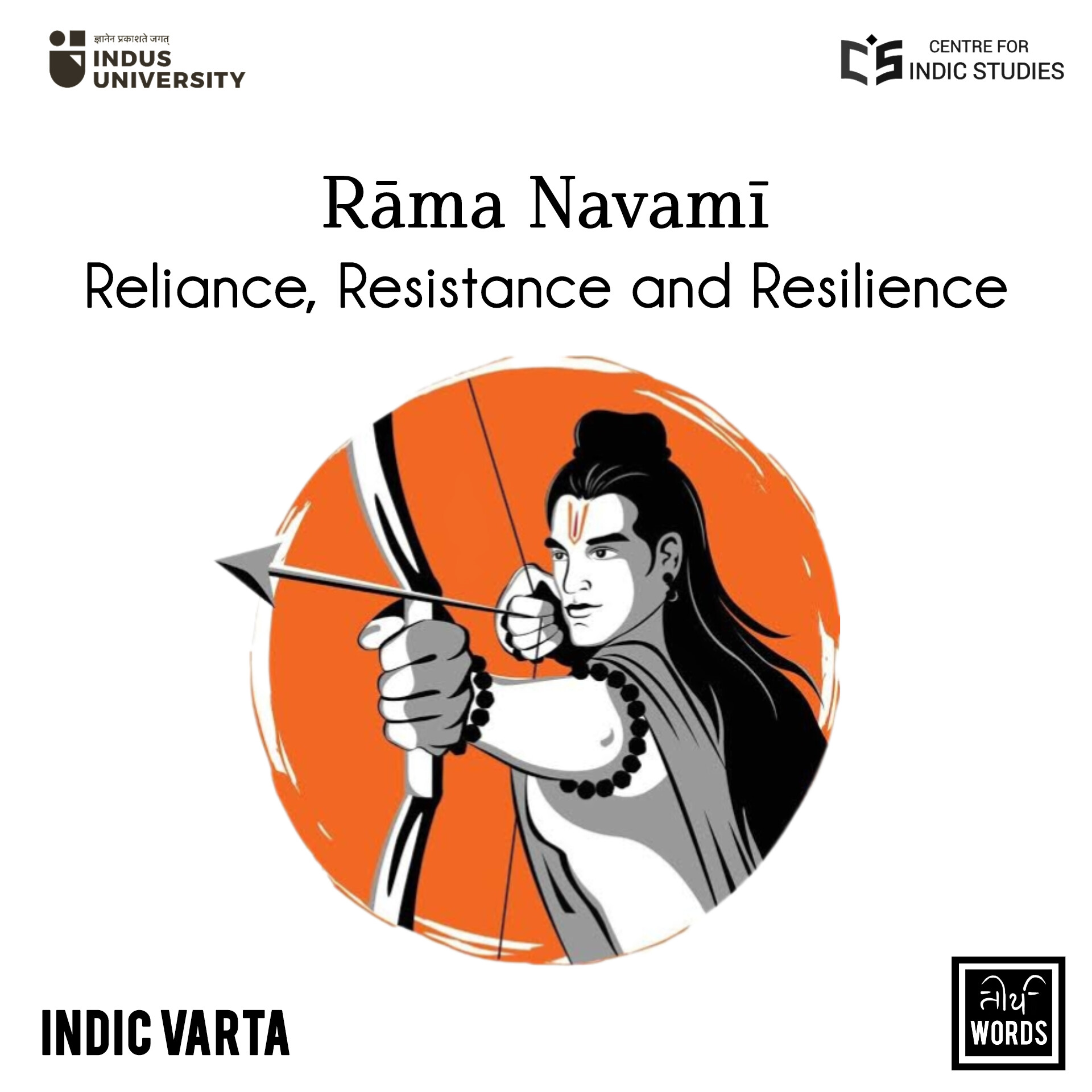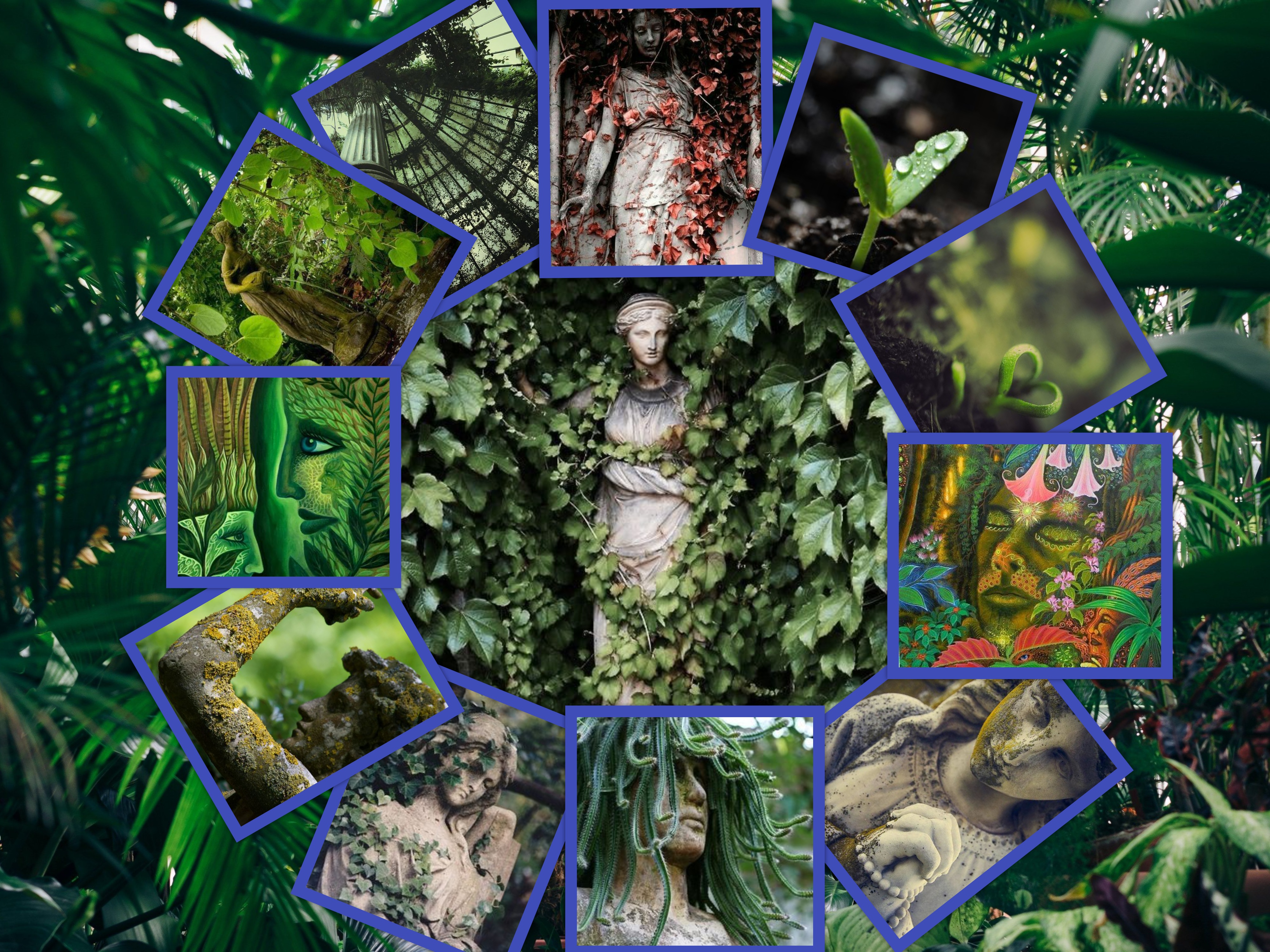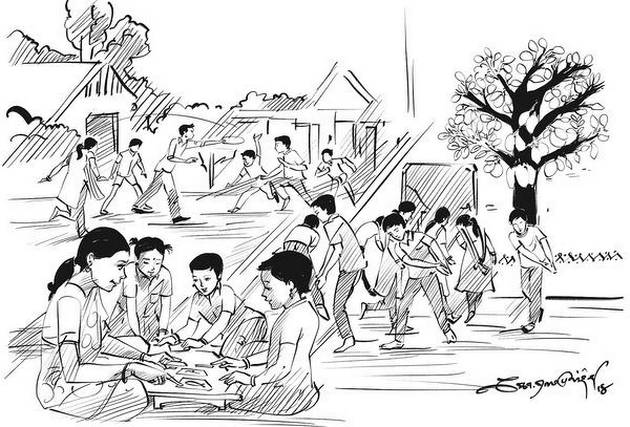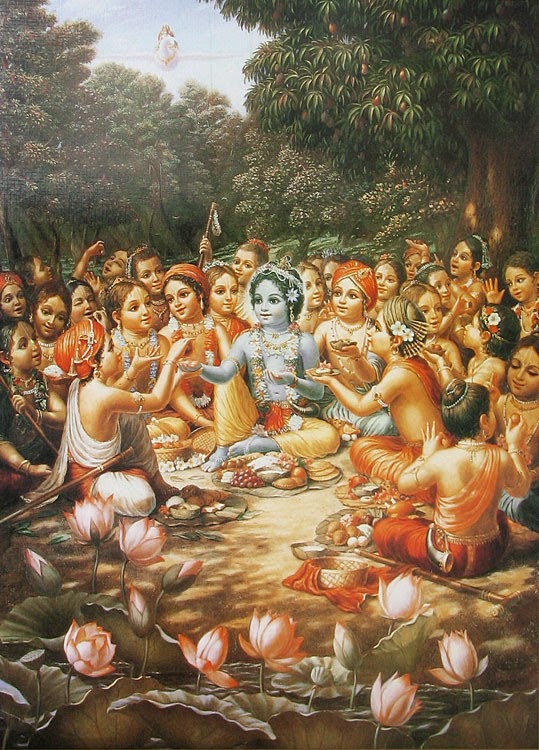- Visitor:51
- Published on: 2025-04-06 03:35 pm
Rāma Navamī: Reliance, Resistance, and Resilience
In 2021, Mamata Banerjee, the Chief Minister of West Bengal, refused to speak at an event celebrating Netaji Subhas Chandra Bose’s birth anniversary after the crowd chanted "Jai Shree Ram" (Hail lord Rāma)! She called it an insult, refusing to be part of what she perceived as a deliberate attempt to provoke her. Quite often, she has displayed a strong aversion to the chant "Jai Shree Ram," leading to significant political controversies. Since then, the discussion has crept into the socio-political milieu whether Śrī Rāma and the celebration of the Rāma Navamī are an integral part of the ‘Bengali’ culture and lifestyle. Some argue that Śrī Rāma stands as a hyper-masculine and misogynist icon since he sent Sītā to exile even after rescuing her and, therefore, he is incompatible to the Bengali traditions which are largely modelled on the Śākta traditions where the feminine forms of divinity are worshipped and cherished. However, not only these claims are vague and preposterous, they reek of the propaganda of divisive political tactics employed to keep the Hindu population divided for vote-bank politics. Although it is debatable whether the consciousness of unity amongst the Hindus in the state has been bolstered by the momentum shift in the present day Bengali politics, it is undeniable that Śrī Rāma has been an integral part of Bengal’s history, society, and culture—whether pre-colonial, or colonial, or post-colonial times. From the reliance on Rāma as instructed by Śrī Caitanya and simplified by Kṛttivāsa Ojhā’s vernacular rendition, from the resistance of the Bengali Hindus to the Mughals in the past and to Marxist forces and Mamata’s regime in the present, the article cogitates upon the resilience of the Bengali Hindus and their future from political Hindutva to civilizational Dharma.

In 2021, Mamata Banerjee, the Chief Minister of West Bengal, refused to speak at an event celebrating Netaji Subhas Chandra Bose’s birth anniversary after the crowd chanted "Jai Shree Ram" (Hail lord Rāma)! She called it an insult, refusing to be part of what she perceived as a deliberate attempt to provoke her. Quite often, she has displayed a strong aversion to the chant "Jai Shree Ram," leading to significant political controversies. Her reaction led to widespread criticism from the BJP and other ‘right-wing’ supporters, who accused her of being anti-Hindu and appeasing minorities for political gains. Her fear or discomfort with the slogan stems from both ideological and political reasons, as it has become a maxim of the Bharatiya Janata Party (BJP) and its ‘Hindutva’ politics. It is quite obvious that her discomfort with the slogan is also rooted in West Bengal’s changing political landscape. For decades as a stronghold of the Communist Party of India – Marxist (CPIM) and then of the Trinamool Congress (TMC)—both being ideologically against the ‘Hindutva’—the state has slowly seen a rising influence of the BJP, which has weaponized "Jai Shree Ram" to challenge her governance.
Since then, the discussion has crept into the socio-political milieu whether Śrī Rāma and the celebration of the Rāma Navamī are an integral part of the ‘Bengali’ culture and lifestyle. Some argue that Śrī Rāma stands as a hyper-masculine and misogynist icon since he sent Sītā to exile even after rescuing her and, therefore, he is incompatible to the Bengali traditions which are largely modelled on the Śākta traditions where the feminine forms of divinity are worshipped and cherished. However, not only these claims are vague and preposterous, they reek of the propaganda of divisive political tactics employed to keep the Hindu population divided for vote-bank politics. Although it is debatable whether the consciousness of unity amongst the Hindus in the state has been bolstered by the momentum shift in the present day Bengali politics, it is undeniable that Śrī Rāma has been an integral part of Bengal’s history, society, and culture—whether pre-colonial, or colonial, or post-colonial times.
Rāma Navamī, the festival celebrating the birth of Śrī Rāma, stands as a significant cultural and religious event in the Bengal’s identity. Observed on the ninth day of the bright fortnight of Caitra, marking the birth of Rāma, the seventh avatāra of Viṣṇu, it is an occasion that has been perennially celebrated in the undivided Baṅga region of Bhārata (India) and its significance transcends mere ritualistic celebrations, encompassing dimensions of social cohesion, political symbolism, and cultural endurance. I see the auspicious occasion of Rāma Navamī through three interrelated paradigms: reliance, resistance, and resilience. Reliance on Rāma evolves as the spiritual and theological model of dharma in the land. However, Rāma Navamī also holds specific grounds of resistance in the historical and contemporary uses from the socio-political contexts. Most importantly, the continuation of the occasion amidst such adverse political scenarios also marks the resilience of the Bengali Hindus who have adapted and survived through shifting cultural and historical landscapes.
Reliance: From Śrī Caitanya to Kṛttivāsa Ojhā
Rāma, often epitomized as maryādāpuruṣottama (the dignified man), serves as an exemplar of dharma. Bhakt or devotion to Rāma has been central to the Rāma Navamī celebrations, with the Rāmāyaṇa serving as the primary scriptural source for his life and teachings. In the Gauḍīya Vaiṣṇava tradition founded by Śrī Caitanya (1486-1534 CE), reliance on Rāma is emphasized through kīrtana, japa, and scriptural recitation. In temples and homes across Bengal, devotees observe vrata (fasting), engage in kīrtana, and perform ceremonial abhiṣeka (ritual bathing) of Rāma. This reliance is also soteriological, emphasizing surrender (prapatti) to Rāma as a means of bhakti. The eponymous ‘Hare Kṛṣṇa’ mahāmantra is at the very core of the kīrtana in the Gauḍīya Vaiṣṇava tradition. The actual mantra uttered by Nārada in the Kali Santaraṇa Upaniṣad (2) goes thus:
हरे राम हरे राम राम राम हरे हरे ।
हरे कृष्ण हरे कृष्ण कृष्ण कृष्ण हरे हरे ।।
However, until the intervention of Śrī Caitanya, neither this mantra was so extensively chanted or sung, nor was the Kali Santaraṇa Upaniṣad in the mainstream of discourse– whether it in the theological domains or among the kīrtana practitioners. Śrī Caitanya took the mantra and popularized its inverted version without distorting its meaning or encountering any grammatical error (since Saṃskṛta as a language has the flexibility of reverse juxtaposition of words). Vṛndāvanadāsa in the Caitanya Bhāgavata (1.12.134-141) analyzes in detail Śrī Caitanya’s version of the mantra:
हरे कृष्ण हरे कृष्ण कृष्ण कृष्ण हरे हरे ।
हरे राम हरे राम राम राम हरे हरे ।।
Not merely the kīrtana method of navavidhā bhakti, Śrī Caitanya, also a masterly scholar of the itihāsa texts. His hagiographies record him citing the śloka from the Skanda Purāṇa (3.5.52) which blandishes the chanting of the name of Rāma as the ultimatum in the Kali Yuga:
रामनामैव नामैव नामैव मम् जीवनम् ।
कलौ नास्त्येव नास्त्येव नास्त्येव गतिरन्यथा ॥
[Chanting the name of Rāma is the one and only purpose of my life! There is no other way to get redemption in the Kali Yuga!]
Śrī Caitanya Mahāprabhu, the radiant soul of Bengal’s spiritual renaissance and a champion of socio-political upliftment, saw Lord Rāma as an integral part of Bengal’s identity. This connection was not limited to geographical or socio-political dimensions but extended deeply into the realm of sādhanā, the practice of spiritual discipline. He frequently emphasized the significance of Rāma’s name, virtues, and pastimes in the path of devotion, drawing from sacred texts and traditions. For him, Rāma was not just a historical or mythological figure but a source of divine inspiration, embodying righteousness, devotion, and the highest ideals of dharma. To Śrī Caitanya, Rāma is an indispensable part of Bengal’s spiritual vibrancy and socio-political emancipation, as he would often quote:
रमन्ते योगिनोऽनन्ते सत्यानन्दे चिदात्मनि ।
इति रामपदेनासौ परं ब्रह्माभिधीयते ।।
(Padma Purāṇa 6.62.8)
[The yogīs dally in the unending and eternally blissful supreme spirit. That is why the supreme spirit, the brahma, is also called by the name of Rāma.]
Kṛttivāsa Ojhā, a contemporary poet of Śrī Caitanya and one of the legendary figures who brought the language ‘Bāṅglā’ into the classical standards, is renowned for his literary contributions—chief of which is the first Bāṅglā version of the Rāmāyaṇa titled as the Kṛttivāsī Rāmāyaṇa or Śrīrāma Pāñcālī. His Bengali retelling of the Rāmāyaṇa, was instrumental in shaping Bengali identity, thought, and literary traditions, ensuring that the epic of Rāma was accessible to a Bengali-speaking audience. The Kṛttivāsī Rāmāyaṇa is not merely a translation of Vālmīki’s version of the epic, rather it is a localized and culturally adapted rendition that integrates the social ethos, linguistic nuances, and devotional sentiments of medieval Bengal. With its vernacular accessibility, it has played a crucial role in shaping popular devotion to Rāma in Bengal.
The Kṛttivāsī Rāmāyaṇa played a significant role in the evolution of the Bengali language. During the 15th century, Bengali was undergoing a transition from its early medieval phase to a more structured and refined form. Kṛttivāsa’s poetic composition enriched the vocabulary and syntax of Bengali, making it more expressive and accessible to common people. His work also contributed to the development of narrative poetry in Bengali, inspiring later poets and authors. Additionally, Kṛttivāsa’s adaptation of the Rāmāyaṇa introduced new stylistic elements, such as the use of pada (short lyrical verses) and dohā (couplets), which became integral to Bengali poetic traditions. His choice of words and rhythmic meter made the epic engaging and easy to memorize, aiding in oral transmission across generations.
The Kṛttivāsī Rāmāyaṇa became a foundational text in Bengali Hindu culture, deeply influencing practices, storytelling traditions, and folk performances. Through his narration, Kṛttivāsa emphasized bhakti (devotion) over ritualistic orthodoxy, aligning with the broader ‘bhakti movement’ that was flourishing in medieval period. His work reinforced the idea that devotion to Rāma transcends caste and social barriers, a sentiment that resonated deeply with the common people of Bengal. Folk traditions such as pāṭha (recitations) and jātrā (folk theatre) frequently drew upon Kṛttivāsa’s verses, making the Rāmāyaṇa an essential part of Bengali rural life. Even today, in many parts of Bengal, recitations from the Kṛttivāsī Rāmāyaṇa are performed in homes and temples, especially during religious ceremonies and festivals like Rāma Navamī and Durgā Pūjā.
Moreover, the Kṛttivāsī Rāmāyaṇa plays a crucial role in shaping the Durga Pūjā celebrations in Bengal. Kṛttibāsa Ojhā’s version popularized the legend of ‘Akāla Bodhana’—Śrī Rāma’s untimely invocation of Devī Durgā before his battle with Rāvaṇa. This narrative established the autumnal worship of Durgā (Śāradīya Durgotsava) as a significant festival in Bengal. The tradition of offering 108 nelā (blue lotuses) and performing elaborate rituals stems from his text. The influence of Kṛttibāsa’s storytelling ensures that Durga Pūjā is not just a religious event but also a celebration of victory, devotion, and Bengali cultural pride.
Kṛttibāsa’s Rāmāyaṇa also carried socio-political implications. At a time when Bengal was under the rule of the Delhi Sultanate, and later the Mughals, his work reinforced Hindu identity and provided a sense of cultural unity. The epic’s themes of dharma (righteousness) and good governance served as moral guidelines for rulers and subjects alike. Furthermore, Kṛttibāsa localized certain aspects of the Rāmāyaṇa, incorporating Bengali customs, landscapes, and societal structures. His depiction of Ayodhyā, Laṅkā, and the forests reflected the geographical imagination of medieval Bengal, making the story more relatable to the local audience.
Upendrakishore Ray Chowdhury (1863-1915 CE) was another pioneering figure in Bengali literature, printing technology, and children’s storytelling. His Cheleder Rāmāyaṇa (The Rāmāyaṇa for Children) is one of the most beloved retellings of the epic for young readers in Bengal. Written in simple yet engaging Bengali prose, this work made the grand narrative of Rāma accessible to children while preserving its moral and philosophical depth. Upendrakishore’s Cheleder Rāmāyaṇa became a gateway for generations of Bengali children to understand the values of righteousness (dharma), courage, and devotion. His lucid storytelling, infused with warmth and imagination, transformed the epic from a distant, mythological tale into a relatable and inspiring story. The book played a vital role in fostering an early appreciation for Bengali literature, mythology, and ethics among young readers. As a children’s writer, Upendrakishore mastered the art of balancing simplicity with depth. He eliminated unnecessary complexities, making the narrative engaging without losing the essence of the original epic. This approach influenced later Bengali children’s literature, setting a precedent for storytelling that is both educational and entertaining. The book’s widespread popularity contributed to the enduring presence of the Rāmāyaṇa in Bengali households. It reinforced cultural traditions, inspiring plays, illustrations, and adaptations in children’s theatre. His legacy continued through his son Sukumar Ray and grandson Satyajit Ray, both of whom carried forward his contributions to Bengali literature and arts. Even today, Cheleder Rāmāyaṇa remains a cherished introduction to the epic, ensuring that the values and aesthetics of the Rāmāyaṇa remain deeply embedded in Bengali cultural consciousness.
Observing these instances, it is only foolish to say that Śrī Rāma is alien to Bengali culture. Therefore, the celebration of his birth anniversary only embodies a period of renewed commitment to dharma and surrender to divine grace, reinforcing the role of reliance.
Resistance: From Mughals to Mamata
Bengal, which has historically been a land of immense spiritual and cultural richness, has sensed a sustained resistance to the veneration of Rāma and the celebration of Rāma Navamī. This resistance, deeply rooted in political, social, and ideological battles, has evolved from Mughal-era suppressions to contemporary conflicts under the Trinamool Congress (TMC) government led by Mamata Banerjee. One unbiased mind may see these instances as an attempt to erase Hindu civilizational consciousness and wreck the nationalist spirit associated with Rāma.
During the Mughal era, Bengal was subjected to severe religious persecution under rulers like Aurangzeb, who sought to diminish Hindu influence. Temples dedicated to Rāma were often desecrated or destroyed, and Hindu religious practices were curtailed. The Islamic rulers of Bengal, including the Nawabs of Murshidabad, promoted an Islamic cultural dominance, leaving little space for the free expression of Hindu traditions such as Rāma Navamī. Despite this, Hindu resistance remained strong, as seen in the Bhakti movements of the time, particularly through figures like Caitanya Mahāprabhu, who emphasized devotion to Rāma and Kṛṣṇa but also respected the larger Hindu pantheon. The survival and transmission of the Kṛttivāsī Rāmāyaṇa in medieval Bengal also exemplifies this underground resistance.
Under British rule, while religious freedom was nominally permitted, the colonial administration often played a divisive role in Hindu-Muslim relations. The British encouraged the separation of Bengali Hindus and Muslims through policies like the Partition of Bengal (1905), leading to greater communal tensions. The rise of leftist and secularist ideologies in the late colonial period further diluted the centrality of Hindu religious identity in Bengal’s socio-political sphere. The influence of communism in Bengal from the early 20th century introduced a strong anti-religious sentiment, which later evolved into an explicitly anti-Hindu stance. Rāma, as a symbol of dharma and Hindu sovereignty, was increasingly sidelined in the emerging leftist intellectual circles.
The post-independence period saw Bengal falling under the ideological dominance of the Communist Party of India - Marxist (CPI-M) for over three decades (1977–2011 CE). The leftist rule in Bengal was marked by an aggressive secularist stance that often translated into the marginalization of Hindu festivals and traditions. Rāma Navamī, which was traditionally observed in various parts of Bengal, was downplayed and discouraged under leftist governance. The Communists promoted a narrative that vilified Hindu traditions as symbols of "upper-caste oppression" and "Brahminical hegemony." Hindu festivals were seen as regressive, while Muslim festivals and Leftist-driven "secular" movements received state patronage. Temples and religious processions were denied necessary permissions, and any attempt to revive Hindu identity was met with state-sponsored suppression.
The fall of the CPI(M) and the rise of Mamata Banerjee’s TMC in 2011 did not bring any relief to Hindu assertion in Bengal. Instead, her government intensified the policy of minority appeasement, leading to an even more hostile environment for Rāma-centric festivities. The celebration of Rāma Navamī, which saw a revival in the late 2010s, became a major flashpoint between the ruling establishment and the Hindu nationalist forces. Under Mamata Banerjee’s rule, blatant favoritism towards the Muslim community has been witnessed. From granting allowances to imams and muezzins to turning a blind eye to illegal immigrant settlements, her government has systematically attempted to change Bengal’s demographic and cultural fabric. This has resulted in growing resistance from the Hindu community, particularly through the resurgence of Rāma Navamī processions. During the 2017 and 2018 Rāma Navamī celebrations, large processions carrying saffron flags and chanting “Jai Shree Ram” were met with violent crackdowns by the state police. Several Hindu activists were arrested, while Muslim-dominated areas witnessed police inaction against anti-Hindu rioters. The use of state machinery to suppress Hindu religious expression became a defining feature of Mamata’s governance, reinforcing the perception that she was anti-Hindu.
In response to the suppression of Rāma Navamī celebrations, the Bharatiya Janata Party (BJP) and other Hindutva organizations began actively promoting the festival as a symbol of Hindu resistance and identity. The slogan “Jai Shree Ram”, once a simple devotional chant, evolved into a political war cry against Mamata Banerjee’s regime. The TMC’s intolerance towards “Jai Shree Ram” became evident when Mamata herself reacted angrily to the chant in public events. Several opposition members and common citizens were arrested for chanting “Jai Shree Ram”, fueling further resentment among Hindus. The ‘Hindutva’ movement in Bengal framed this struggle as a battle between native Hindu cultural assertion and an imposed secular-leftist-Islamist nexus. The 2019 Lok Sabha elections saw a significant shift in Bengal’s political landscape, with the BJP making unprecedented gains, largely riding on the back of Hindutva mobilization and the resistance to Mamata Banerjee’s minority appeasement politics. Rāma Navamī processions became a massive show of Hindu unity, drawing large crowds and further consolidating the Hindu vote bank against the TMC.
The resistance to Rāma and Rāma Navamī in Bengal, from the Mughal to Mamata, represents a long-standing conflict between Hindu civilizational identity and forces seeking to suppress it. The ‘Hindutva’ movement sees the revival of Rāma Navamī as a crucial step in reclaiming Bengal’s lost spiritual heritage and resisting political forces that seek to erase Hindu identity. With the BJP’s growing influence and the increasing assertiveness of Hindu nationalist groups, the battle for Rāma in Bengal is far from over. The resurgence of Rāma Navamī as a festival of resistance and pride signifies a larger awakening among Bengal’s Hindus, who refuse to let their cultural and religious heritage be undermined any longer. The coming years will determine whether Bengal can reclaim its Hindu legacy or continue to be a battleground for ideological conflicts that suppress its true civilizational essence.
Resilience: From Political Hindutva to Civilizational Dharma
Hindus in Bengal have long faced political, ideological, and religious challenges. From the days of Mughal oppression to colonial-era divisions and decades of leftist rule, Hindu identity in Bengal has often been suppressed. However, the recent years have witnessed an inspiring resurgence, with a reinvigorated spirit of cultural and religious assertion, especially centered around the figure of Rāma and the celebration of Rāma Navamī. This revival is not just a religious movement but a powerful symbol of Hindu resilience in Bengal’s socio-political landscape.
Bengali Hindus have begun reclaiming their devotional and cultural spaces despite years of political opposition. The rise of social media and alternative political narratives has allowed suppressed voices to gain prominence. The resurgence of Hindu festivals, processions, and public celebrations signifies a shift in consciousness, where people are no longer willing to accept the dilution of their cultural heritage. The increasing participation in Rāma Navamī processions, Kālī Pūjā, and Hanumāna Jayantī has reinforced Hindu identity across districts, particularly in regions that have witnessed demographic changes. Hindu youth, in particular, have played a vital role in this revival, using technology and grassroots mobilization to counter anti-Hindu propaganda and to organize large-scale religious events.
The reinvigoration of Rāma Navamī is one of the most prominent manifestations of this Hindu resurgence in the grander scale in Bengal. What was once a festival largely observed within temples has now become a widespread movement. The streets of Kolkata, Howrah, Murshidabad, and other towns see thousands of devotees chanting “Jai Shree Ram”, carrying saffron flags, and organizing massive processions. The sight of young men, women, and even elderly participants enthusiastically joining these celebrations reflects the deep-rooted reverence for Rāma in Bengal’s spiritual consciousness. Rāma, as a symbol of dharma, resistance, and righteousness, has become a rallying point for Hindus who feel marginalized in their own land. The celebration of Rāma Navamī is no longer just a religious act but a statement of cultural pride and defiance against forces that have historically sought to suppress Hindu identity in Bengal.
Despite this resurgence, the Hindu community in Bengal continues to face challenges. Political roadblocks, administrative hurdles, and targeted violence during Hindu processions highlight the deep-rooted resistance against this cultural assertion. The state government’s frequent restrictions on Hindu festivals while permitting large-scale celebrations of other religious groups have further fueled resentment. However, the unwavering spirit of Bengal’s Hindus suggests that this revival is here to stay. With continued grassroots organization, legal activism, and socio-political engagement, the Hindu resurgence in Bengal is poised to grow stronger. The spirit of Rāma Navamī symbolizes not just devotion but the undying resilience of a civilization determined to reclaim its identity and rightful place in history, rooted in the Sanātana Dharma.
- 25 min read
- 1
- 0










